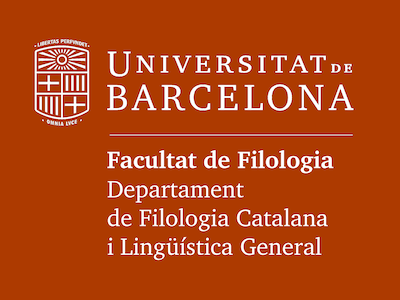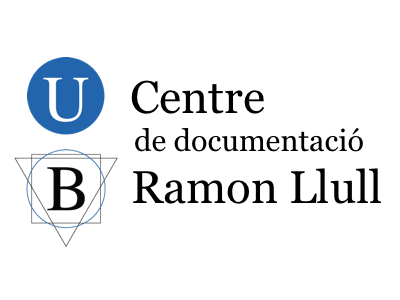MiMus Project
The Archive of the Crown of Aragon in Barcelona (ACA) contains a large number of documents that inform us about the presence of artists specializing in singing, music, and entertainment in general at the Catalan-Aragonese court.
At the start of the 20th century, Catalan historiography quickly acknowledged the importance of archival records as a source for explaining the cultural life of the past. Antoni Rubió i Lluch’s work, Documents per a la història de la cultura catalana medieval (1908-1912), is a clear example of this approach. Studies by Higini Anglès (1925, 1935) on medieval music in the Crown of Aragon and by Ramon Menéndez Pidal on jongleur poetry in the Iberian Peninsula (1957) demonstrated the interest of these documents in reconstructing the role of minstrels and the cultural significance of music and poetry in medieval courts. Following in their footsteps came Maricarmen Gómez Muntané (1979, 2001), and Josep Trenchs Odena and Ignasi Baiges (2000-2002), among others.
Careful archival studies and transcriptions were also conducted for some musical traditions from Northern Europe, notably the English (Constance Bullock-Davies 1978) and the French (Craig M. Wright 1979). These pioneering works are relevant from a methodological perspective and serve as a complement to our sources. Given the international nature of the music and poetry market in the medieval period, the establishment of a documentary corpus on minstrels and courtly entertainment artists in the Crown of Aragon cannot be conceived in isolation but in constant dialogue with records relating to the lyric repertoires of neighbouring traditions.
-
What were the professional and cultural profiles of the musicians and minstrels active in the courts of the medieval Crown of Aragon?
-
For whom did they perform, and what recognition did they receive from political powers?
-
What were their socio-economic conditions?
-
What was the impact of the relationships between different courts, and the movements of artists between these courts, for the music and poetry of this period?
To address these questions, the MiMus Project has transcribed, edited, and analyzed an extensive corpus of documents about the artists who participated in the poetic and musical life at the courts of the kings of the House of Barcelona from the mid-13th century to the mid-15th century (1235-1435). The examination and exploration of these documents are complemented by the analysis of other sources (literary, prescriptive, iconographic), useful for outlining the profiles of the artists and the evolution of courtly entertainment.
Research strands
1. Organization of the court and the courtly space between the 13th and 14th centuries
With the Ordinacions de la Casa i Cort (Ordinances of the House and Court) of Peter the Ceremonious (1344), we see how the courtly space was gradually populated by musicians and how the Royal Chapel of singers was formed, the oldest in Europe after the Papal Chapel of Avignon. The objective of this strand of research is to study how music, and especially polyphonic music, became an important element in the rhetoric of royal power, without forgetting the role of the Households of the Queens, the Infantas and the Infants.
2. Organization and accounting aspects of the presence of musicians at the court of the Kings of Aragon
The objective of this study is to reconstruct the mechanisms through which the Kings ensured the constant presence of professionals of music and other performing arts at their courts. The accounting information preserved mainly in the Mestre Racional records allows us to understand how the court personnel was hired, the reasons for which they were paid and, therefore, the economic and artistic value of their service. The systematic collection of this information allows us to reconstruct with great precision the almost daily presence of musicians at the courts of the Catalan-Aragonese kings.
3. The representation of minstrels and music in medieval Catalan literature
This research strand focuses on the figure of the minstrel, which has fascinated literary historians since the Romantic period. The creation of a corpus of literary references to minstrels, along with descriptions of performative musical situations involving minstrels, serves as both the foundation and the springboard for this research.
The corpus focuses on Catalan literature from the 13th to the 15th centuries, but other Romance texts are also taken into account. The terms used to designate the professions and specialisms, and the references to instruments and literary genres are analyzed; all these elements are compared with the designations present in the archival documentation on minstrels at the court of Aragon.
4. Presence of non-Christian minstrels at court
This strand focuses on the documentation of Jewish and Muslim minstrels. The prosopographies of these musicians are reconstructed and an attempt is made to find out which instruments and repertoires they played and what functions they fulfilled at court. This contextualization is necessary because in Catalan literature, unlike Castilian literature, there are very few references to non-Christian minstrels; archival documentation, on the other hand, records their continuous presence.
5. Cultural contacts and intertextuality
As they travelled from place to place, minstrels took with them their instruments and repertoires, and the performance techniques and interpretative styles that characterized their art. When they arrived at a new court, they were confronted by local repertoire, instruments, techniques, and tastes. Their presence could translate into the teaching of performance techniques and the dissemination of repertoires, and at the same time influence the reception and assimilation of techniques and repertoires of the host court. The MiMus records offer insights into the historical context of poetic and musical activities, thus helping to confirm borrowings and adaptations, and sheds light on the complex phenomenology that is encompassed under the concept of intertextuality. This strand of research is crystallized in:
- New editions of pieces of the Catalan lyric repertoire that permit a better understanding of the texts and their manuscript transmission.
- A reassessment of already-known pieces in light of new documentar or historiographic information, including the intertextual networks that place them in specific contexts of production and reception.
MiMus DB
The project is structured around the MiMus DB, a database that organizes and systematizes the information contained in the corpus of MiMus documents and offers unprecedented information on the locations, circumstances, and costs of entertainment at court, on the social and professional status of minstrels, their specialization, their movements, their relationships with power, and the networks of patronage and diplomacy that sustained their activity.
Acces to the MiMus DB
Corpus TOC – Occitan-Catalan Treatises related to 'Las Leys d'Amors'
While archival records offer valuable insights into the historical context of musical activity, they often fail to provide specific details about the lyrical repertories and musical styles that were actually performed. The Corpus TOC, which is currently focused on lemmatizing the text of Las Leys d'Amors and other 14th-century Catalan and Occitan treatises, has potential to significantly enhance our lexicon and to provide critical clues about the nuances and complexities of medieval poetry and music. The lemmatization of the corpus is selective, prioritizing specific semantic fields: 1) Lexicon related to metrics, rhetoric, and literature; 2) Grammatical lexicon; 3) Lexicon relevant to diverse domains such as linguistics, philosophy and law.
The Corpus TOC is jointly developed with a research team from OVI/CNR (Florence) led by Paolo Squillacioti.
Access the Corpus TOC: http://tocweb.ovi.cnr.it/
MiMus is a research project funded by the European Research Council (ERC) under the European Union’s Horizon 2020 research and innovation programme (Grant agreement No. 772762). The project is based at the Universitat de Barcelona (Departament de Filologia Catalana i Lingüística General, Centre de Documentació Ramon Llull, Institut de Recerca en Cultures Medievals) and has a duration of six years (2018-2024).







